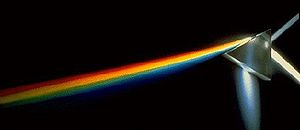
- Image via Wikipedia
Lasers that stimulate condensation may help to induce rain artificially.
The rain dance is getting a twenty-first-century revamp using laser technology. Optical physicists have demonstrated that shooting lasers into the air can trigger the formation of water droplets, a technique that could one day help to stimulate rainfall.
For more than 50 years, efforts to try to artificially induce rain have concentrated on ‘cloud seeding‘ — scattering small particles of silver iodide into the air to act as ‘condensation nuclei’, or centres around which rain droplets can grow. “The problem is, it’s still not clear that cloud seeding works efficiently,” says optical physicist Jérôme Kasparian at the University of Geneva, Switzerland. “There are also worries about how safe adding silver iodide particles into the air is for the environment.”
Kasparian and his colleagues realized that there might be a more environmentally friendly alternative. Firing a laser beam made up of short pulses into the air ionizes nitrogen and oxygen molecules around the beam to create a plasma, resulting in a ‘plasma channel’ of ionized molecules. These ionized molecules could act as natural condensation nuclei, Kasparian explains.
To test whether this technique could induce droplets, the researchers fired a high-powered laser through an atmospheric cloud chamber in the lab containing saturated air (see video). They illuminated the chamber using a second, standard low-power laser, enabling them to see and measure any droplets produced. Immediately after the laser was fired, drops measuring about 50 micrometres wide formed along the plasma channel. Over the next three seconds, the droplets grew in size to 80 micrometres as the smaller droplets coalesced. The team’s results are published online in Nature Photonics.
Rainmaker
The next step for Kasparian and his team was to take the technique outside. The researchers already have experience using plasma channels to modify the weather: in 2008, they demonstrated that a beam from their high-powered portable ‘Teramobile laser’ could be fired into thunder clouds, triggering an electric discharge. The beam was able to reach its target without being deflected because the generated plasma channel modifies the speed at which light travels through air — slowing it down in the centre of the beam and speeding it up at the sides. This causes the beam to continually self-focus, helping it to maintain a high intensity across large distances (see ‘Bendy laser beam fired through the air‘).
Related articles by Zemanta
- Powerful Laser Makes Raindrops Out of Thin Air (livescience.com)
- Making Rainclouds With Lasers (wired.com)
- Laser-Made Rain! German Scientists Suceed in Zapping Air to Make Clouds (Video) (treehugger.com)








![Reblog this post [with Zemanta]](http://img.zemanta.com/reblog_b.png?x-id=28d753e6-1c3e-4c00-9916-62b24200fbf4)
